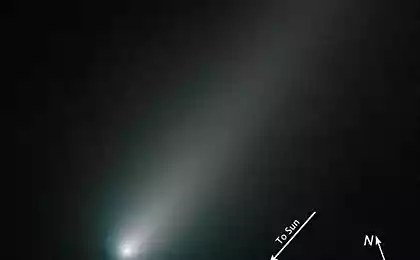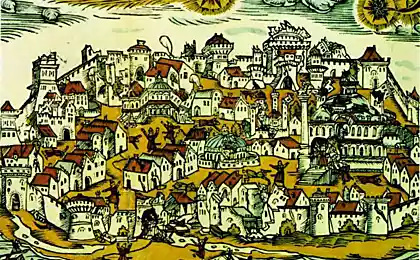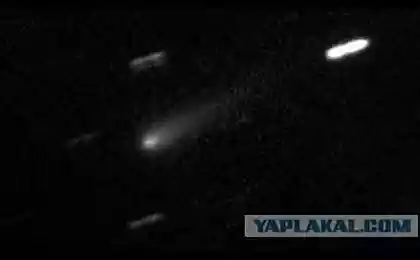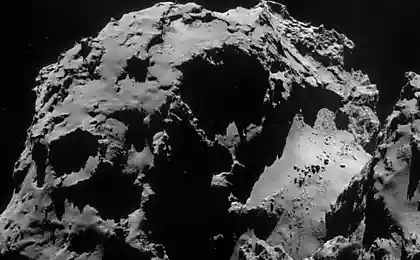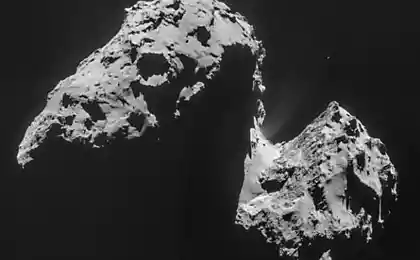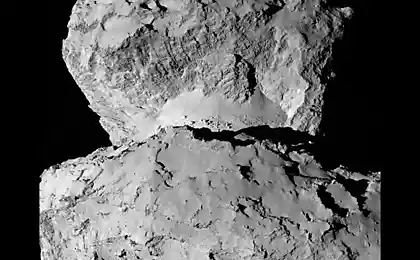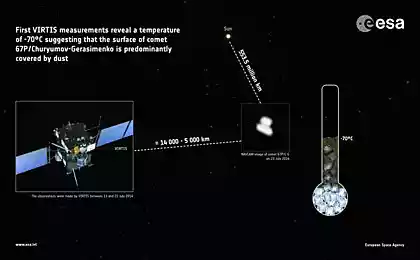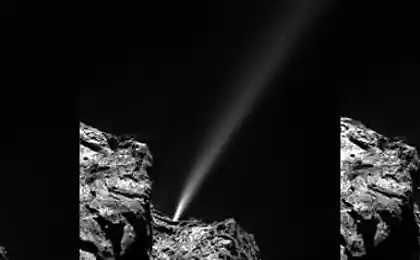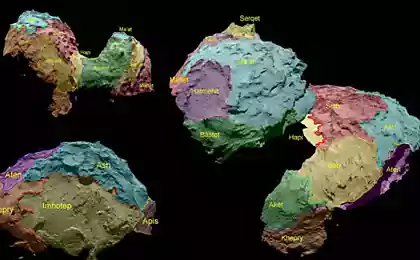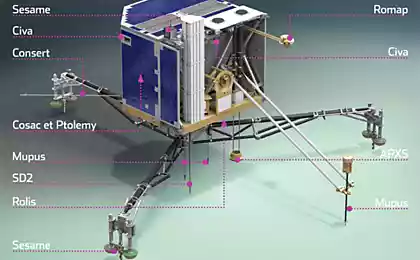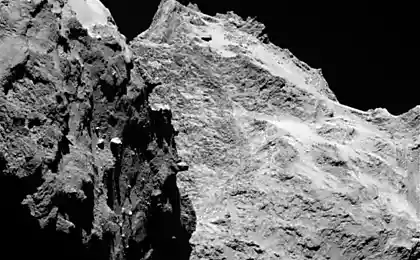555
It becomes increasingly difficult to distinguish an asteroid from a comet

Historically, comets and asteroids belong to two different categories. In one corner, you have icy comets with long, ghostly tails of gas and dust. In another dull rocky asteroids orbiting between Mars and Jupiter.
However, recent studies show that the differences between these two classes of objects is pretty vague, how do the tails of comets. For example, astronomers find asteroids very similar to the comet, and Vice versa.
"We're watching as the dividing line between asteroids and comets," said planetary scientist Henry CoE from Taiwan Academy of Sciences, according to Wired.
Under the comets generally refers to chunks of ice and dust, like dirty snowballs. They contain volatile chemicals — carbon dioxide, ammonia and methane, and was formed far from the Sun where it is cold enough that these compounds could stabilize. Comets revolve on a long elongated orbits, spending most of its time beyond the orbit of Neptune and approaching the Sun every few decades or even millennia. As you get closer to the warmth of the Sun, the ice begins to melt and turn into gases, which are blown away with the dust by the solar wind and form hazy cover — who. Solar wind and radiation pull this who in well-known tail of the comet.
Meanwhile, asteroids are composed mainly of stone and metal, making them much denser than comets. They are mostly inert and not much has changed since its formation about 4.6 billion years ago. Most of the asteroids located in the main asteroid belt between Mars and Jupiter, has appreciated at a fairly stable circular orbits.

Despite the differences between them, astroid and comets is largely similar. In addition, these objects wandering through space like a comet, and an asteroid recently visited by spacecraft. Last month, the European probe "Rosetta" took the lab "Philae" on the comet for the first time in history; in 2005 a Japanese spacecraft landed on an asteroid and returned samples from its surface (the next mission to the asteroid Japan sent 3 Dec). Like a comet, and an asteroid was described in Hollywood movies. In 1998, two movies about cosmic catastrophes depicted a threat to the Earth from a comet ("deep impact" — without Bruce Willis) and asteroid ("Armageddon" with Bruce Willis).
Recently, scientists have discovered several strange similarities between asteroids and comets. Almost 10 years ago scientists began to discover the objects in the asteroid belt, which spew gas and dust, like comets, said the planetary scientist Scott Sheppard of Research of the Carnegie institution in Washington.
Last month, Sheppard and Chad Trujillo from the Observatory "Gemini" announced that they found a weak tail in the known asteroid in the main belt. To date, 13 scientists have known of such objects, called main belt comets — or active asteroids, depending on who you ask. Sheppard believes that hundreds of them can be in the main belt.
In contrast to the usual comet, the tail of which grows when approaching the Sun, the asteroid is likely spinning so fast that disperses the dust that forms the tail. No one knows what causes the activity of main belt comets, but most likely due to rapid rotation or collisions, which lead to the fact that the ice is buried beneath the surface, sublimate and produce gas jets.
Not just active asteroids blur the boundaries. Last month, a planetary scientist Karen Meech of the University of Hawaii at Manoa and her colleagues announced that they had discovered something like two comets without tails. Call them comets Menks, in honor of tailless Manx cats. Two amazing passive object emerged from the Oort cloud, the distant repository of comets.

"We've never seen before," said Mitch at the press conference on 10 November.
One of these newly discovered objects C/2013 P2, may belong to the type that is proposed in 1950 the astronomer Jan Oort (who, in fact, predicted the existence of the Oort cloud). According to the Oort cloud, some of the objects in the Oort cloud should be covered with a layer of "glaze" which burns out after a single passage near the Sun, resulting in the orbit of the comet occurs tailless object. C/2013 P2 is very red, similar to the Kuiper belt objects, a collection of hundreds of thousands of cold icy bodies beyond the orbit of Neptune, but is closer to the Sun than the Oort cloud.
Scientists are still analyzing novoobrazovany the second object, C/2014 S3, but while it is similar to the asteroid main belt, suggesting that once he's in that zone was. That's interesting, because one of the latest computer simulations showed that in the distant past the orbit of the outer planets like Jupiter and Saturn could be moved, and while they were moving, they pushed asteroids out of the Oort cloud. With the discovery of C/2014 S3, the scientists may have acquired the evidence in support of this theory, they also refute the theory that the asteroids are always found near the Sun, and comets are always far away.
"Astronomers come to the conclusion that the asteroids and comets in fact represent a range of objects," Xie said. Rather than divide all objects into two groups, asteroids and comets can be two extremes of a whole heap of objects, with different activity, content of ice and stone. Astronomers have discovered water ice on the surface of asteroid Themis main belt and water vapor, which comes from Ceres, the largest object in the asteroid belt.
"People like to put things in nice little jars — the jar with the planets, the jar asteroids, a jar of comet, says Sheppard, but there are also many objects that are in these jars don't fit".
Ultimately, what category you will carry a separate object, not so important, says a planetary scientist Anita Cochran of the University of Texas. Scientists (as) interested in the study of the objects themselves and how they were formed. Being a "dinosaur" age of 4.6 billion years, asteroids and comets can help scientists to understand the origin of the Solar system, as you're called.
Source: hi-news.ru

